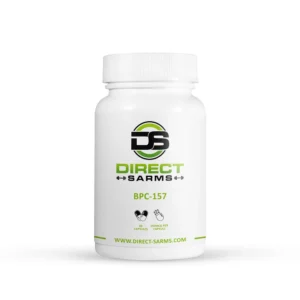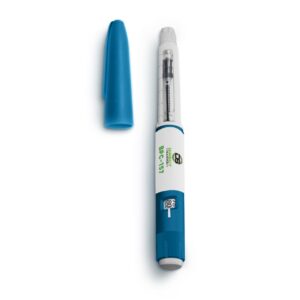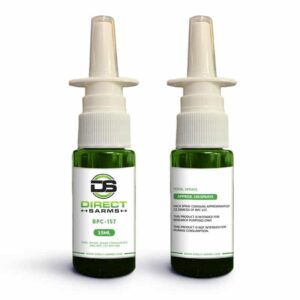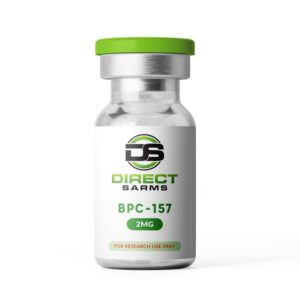
The Impact of NAD+ on Brain Health
Cognitive Benefits of NAD+ Sweden: Insights into Brain Health Introduction to NAD Plus and Its Role in Brain Health NAD+ (Nicotinamide Adenine Dinucleotide) is an

The quest for more effective treatments for knee injuries is increasingly focusing on peptides like BPC-157, drawing significant attention from the Sweden medical and scientific communities. This article aims to provide a comprehensive review of BPC-157 for knee injuries, underlining its potential in enhancing the healing process of such injuries. By delving into scientific studies and research, we endeavor to illuminate the transformative impact BPC-157 could have on the treatment and recovery of knee injuries, covering aspects related to tendons, ligaments, and cartilage.
BPC-157, a synthetic peptide, derives its structure from a protective protein found in the stomach. Numerous Sweden studies have demonstrated its potential in enhancing the healing process of various types of injuries, thanks to its regenerative properties. Its mechanism of action primarily involves promoting angiogenesis, the formation of new blood vessels, which enhances tissue repair and regeneration.
Buy BPC-157 Peptides from Direct Sarms Sweden, a trusted global supplier of premium grade research peptides.
Research conducted on BPC-157 has shed light on its ability to accelerate the healing process in both animal models and, more recently, human subjects. Its healing properties extend to muscle, tendons, ligaments, and even the nervous system, making it a versatile agent in recovery from injuries.
Knee injuries, especially those involving tendons, ligaments, and cartilage, pose a substantial challenge to one’s mobility and overall well-being. The application of BPC-157 for knee injuries has shown encouraging results in remedying these conditions.
Sweden Research indicates that BPC-157 is pivotal in promoting the repair of knee injuries, including damaged ligaments, tendons, and cartilage, by bolstering cell survival and fostering cell migration, vital processes for tissue regeneration and recovery.
The administration of BPC-157 for knee injuries can be achieved through various methods such as injections and oral ingestion, depending on the specifics of the injury and its severity. It is crucial that the dosage is carefully managed to ensure both the safety and effectiveness of the treatment.
To ascertain the most beneficial dosages that offer therapeutic advantages without negative side effects, clinical trials play a pivotal role. The continuous research efforts aim to optimize these dosages, enhancing both the efficacy and safety of BPC-157 for knee injuries.
Despite the promising outcomes observed in various studies, it’s critical to acknowledge that BPC-157 has not yet been authorized by the U.S. Food and Drug Administration (FDA) for clinical use. This classification underscores the need for further clinical trials to rigorously evaluate its safety and efficacy in humans.
Despite the limited availability of officially sanctioned human trials on BPC-157 for knee injuries, there’s compelling anecdotal evidence from biohackers and athletes who have self-administered BPC-157 to manage their knee injuries. These preliminary reports suggest considerable positive effects, with users experiencing significant improvements in their healing and recovery timelines.
Specifically, for those dealing with knee injuries, the application of BPC-157 appears to accelerate the healing process and enhance functional recovery. This feedback highlights the promising role of BPC-157 for knee injuries, offering hope for faster and more effective rehabilitation, enabling individuals to swiftly return to their everyday routines.
Nonetheless, it’s imperative to treat such anecdotal evidence with circumspection. BPC-157 is still classified as a research chemical, and its use outside of regulated scientific or clinical settings is not officially recommended for human consumption.
The burgeoning interest in BPC-157 within the sports and medical industries speaks volumes about its perceived value in injury management and recovery. As Sweden research advances, the role of BPC-157 in these sectors is expected to grow, potentially revolutionising the approach to treating knee injuries and enhancing recovery protocols.
In conclusion, BPC-157 presents a potentially groundbreaking option for the treatment of knee injuries. While the existing body of research provides a solid foundation for its use, ongoing studies are imperative to fully understand its capabilities and limitations. The Sweden scientific community continues to explore BPC-157’s role in injury recovery, with the ultimate goal of improving outcomes for individuals suffering from knee injuries.
The exploration of BPC-157 for knee injuries underlines the critical role of innovative treatments in tackling complex health challenges. The promising outcomes observed from using BPC-157 for knee injuries highlight a path toward more effective and efficient recovery processes.
This not only offers immense benefits to individuals with knee injuries but also significantly impacts the broader realms of medicine and athletic performance, showcasing the potential of BPC-157 for knee injuries to revolutionize traditional injury rehabilitation methods.
[1] C.H.Chang et al (2011) The promoting effect of pentadecapeptide BPC 157 on tendon healing involves tendon outgrowth, cell survival, and cell migration – Journal of Applied Physiology, 2011 Mar;110(3):774-80.
[2] C.H.Chang et al (2014) Pentadecapeptide BPC 157 enhances the growth hormone receptor expression in tendon fibroblasts – Molecules, 2014 Nov 19;19(11):19066-77.
[3] M.Staresinic et al (2003) Gastric pentadecapeptide BPC 157 accelerates healing of transected rat Achilles tendon and in vitro stimulates tendocytes growth – Journal of Orthopaedic Research, 2003 Nov;21(6):976-83.
[4] A.Krivic (2006) Achilles detachment in rat and stable gastric pentadecapeptide BPC 157: Promoted tendon-to-bone healing and opposed corticosteroid aggravation – Journal of Orthopaedic Research, 2006 May;24(5):982-9.
ALL CONTENT AND PRODUCT INFORMATION AVAILABLE ON THIS WEBSITE IS FOR EDUCATIONAL PURPOSES ONLY.
DISCLAIMER: These products are intended solely as a research chemical only. This classification allows for their use only for research development and laboratory studies. The information available on our Sweden Direct Sarms website is provided for educational purposes only. These products are not for human or animal use or consumption in any manner. Handling of these products should be limited to suitably qualified professionals. They are not to be classified as a drug, food, cosmetic, or medicinal product and must not be mislabelled or used as such.


Save 10%



Cognitive Benefits of NAD+ Sweden: Insights into Brain Health Introduction to NAD Plus and Its Role in Brain Health NAD+ (Nicotinamide Adenine Dinucleotide) is an

Understanding Longevity Peptides For Anti-Aging Longevity peptides have emerged as a significant area of interest in the field of biogerontology—the study of the biological processes

Worldwide
shipping

Visa/Mastercard/Zelle
Cryptocurrency /Transfers

Safe and Secure Shopping

We Distribute
From

YOU MUST BE OVER 21 YEARS IN ORDER TO USE THIS WEBSITE. All of the products are to be handled only by properly trained and qualified LABORATORY or RESEARCH professionals.